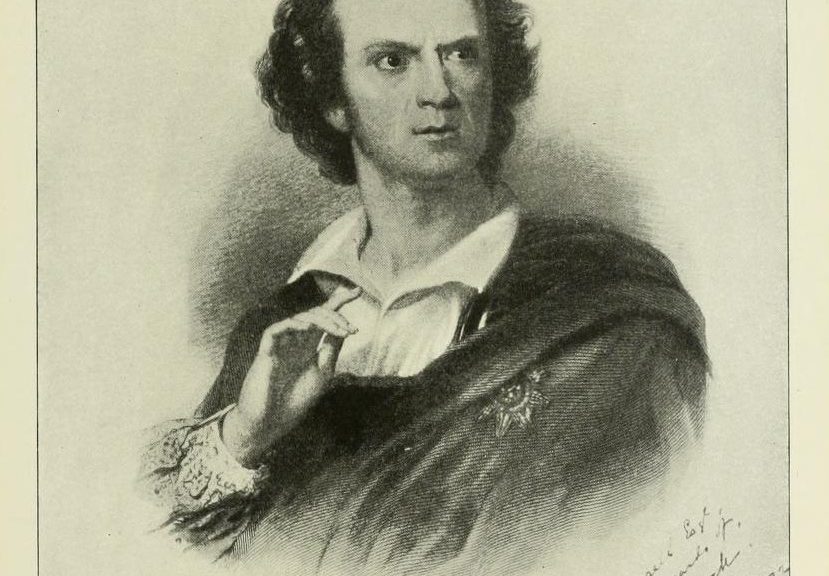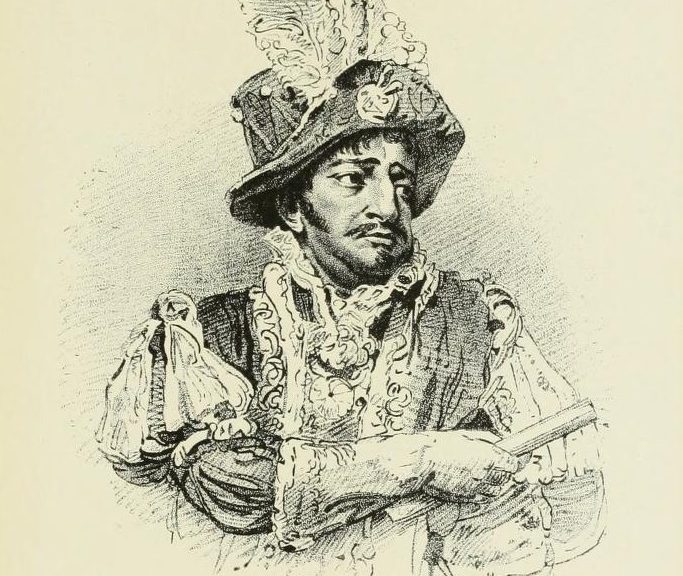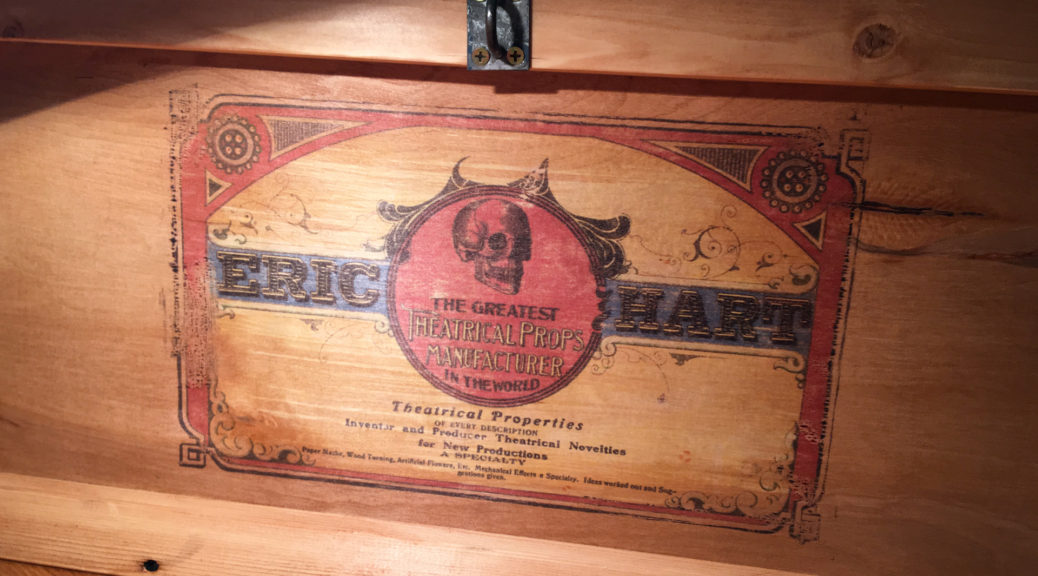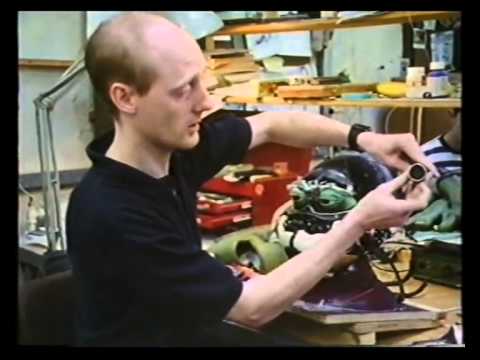Over the past two weeks, we looked at images of Shakespearean actors with costumes and props (see part one and part two). The images come from a 1900 book called the Shakespeare Rare Print Collection, edited by Seymour Eaton. These images help give a sense of what kinds of props they may have used at the time. This week, I am posting the final assortment of these images. Continue reading Even More Shakespearean Actors and Their Props
Tag Archives: images
More Shakespearean Actors and Their Props
Last week, we looked at some images of actors in costume for their roles in various Shakespeare plays. The images come from a 1900 book called the Shakespeare Rare Print Collection, edited by Seymour Eaton. These images help give a sense of what kinds of props they may have used at the time. This week, I have some more of these images. Continue reading More Shakespearean Actors and Their Props
Shakespearean Actors and Their Props
One of my many interests is how the props used in Shakespeare’s plays have evolved over time. One way to discover what props may have possibly appeared on stage is by looking at drawings and photographs of famous Shakespearean actors posing as their characters.
The following images come from a 1900 book called the Shakespeare Rare Print Collection, edited by Seymour Eaton. Most of these actors are from the 18th and 19th century. I cannot tell whether they are posing with actual props from their performances, or if they grabbed real items just to pose for these pictures, but at least it is a starting point. Continue reading Shakespearean Actors and Their Props
Wax Paper Transfer to Wood
Triad Stage just closed a production of Fences which I prop mastered. One of the set dressing items was a wooden plaque with a prayer written on it. I tried out a technique I saw where you print onto wax paper and transfer that to wood. It worked well, so I experimented with it some more, making this video in the process.
I wanted a crate to haul around the props I bring to Maker Faires, so I designed an old-timey crate label for it.
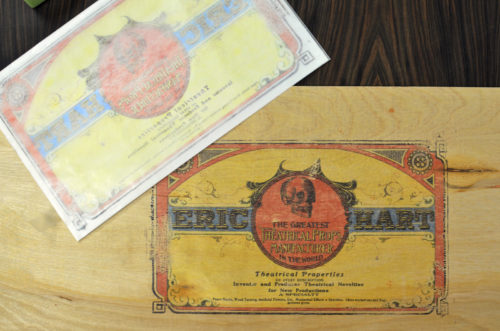
As you can see in the video, the process is very simple. Cut a piece of wax paper. Attach it to regular printer paper. Get an image on your computer and mirror it so it prints out in reverse. Send your wax paper through your inkjet printer. Lay it on your piece of wood and burnish the back of the paper so you rub all the ink off. Be careful not to move the wax paper around once it is on the wood.
In the picture above, you can see a few spots along the edges where the ink sort of blotted up and didn’t transfer as well. The wax paper wants to curl as it goes through the printer, and the ink will not sit right if it is too far or too close from the print head. The first time I tried this, I sent just the wax paper through, and most of the image ended up blotted. Attaching the wax paper to a piece of regular paper helps keep that from happening. The next time I do this, I may try using spray adhesive to attach the wax paper to regular paper, or just use an image that does not go so far to the edges of the page (the edges are where you get the most curling).
Friday Links Anonymous
In case you missed it, the Shop@AVR Blog has these seven amazing images of stage technicians throughout history. Â They have photos from 1899-1935, and one illustration from the 18th century. One photo shows clearers moving the props; clearers were the precursors to prop running crew.
I’ve previously mentioned the massive auction of Rick Baker’s stuff at the end of this month. Check out this article on how Tom Spina Designs is preparing and preserving his work in anticipation of the sale. Some of these props and animatronics are decades old and were not built to last, but Tom and his crew have a ton of experience restoring and protecting items like this.
I missed this article from last autumn, but WNPR has a great profile on Ming Cho Lee. I think it’s safe to say that if you work in American theatre, you will eventually work with a designer who was trained by Ming. Not only has he shaped set design, but he has had a huge part in shaping design education.
Finally, here is a video from the 90s about the original animatronic Teenage Mutant Ninja Turtles. The technology that went into those suits were incredible. Unlike CGI, the suits can actually be performed in live; I wonder if any theatre company has ever used anything as sophisticated as these? That would be a cool show.

